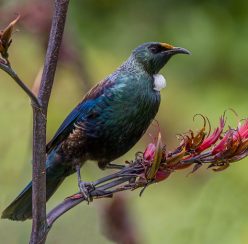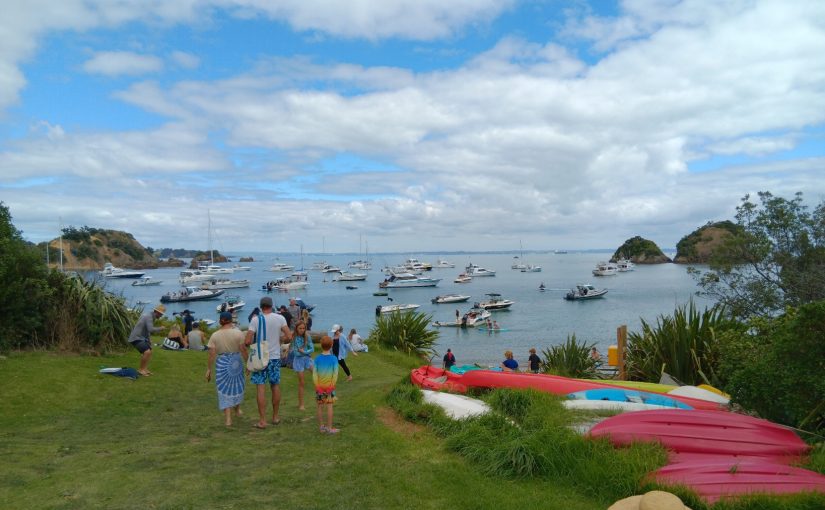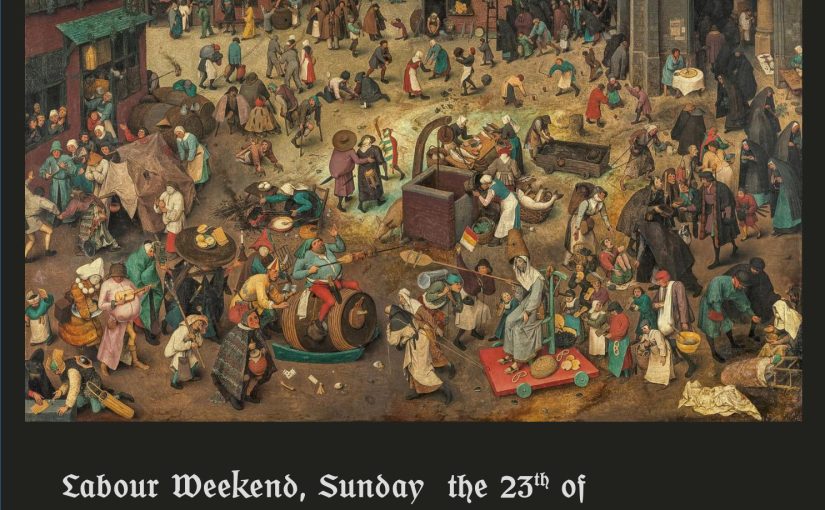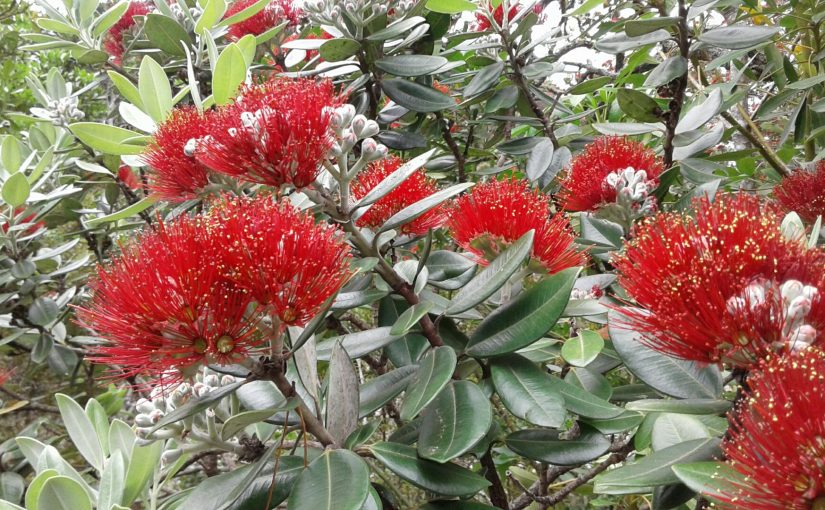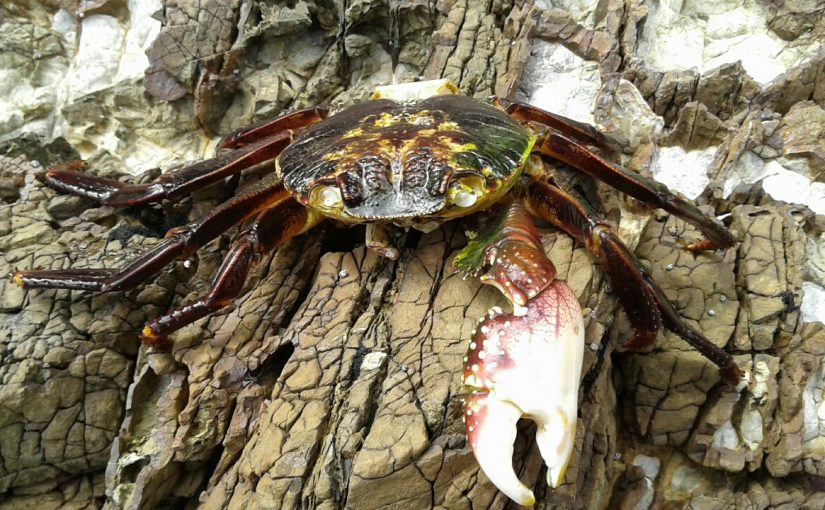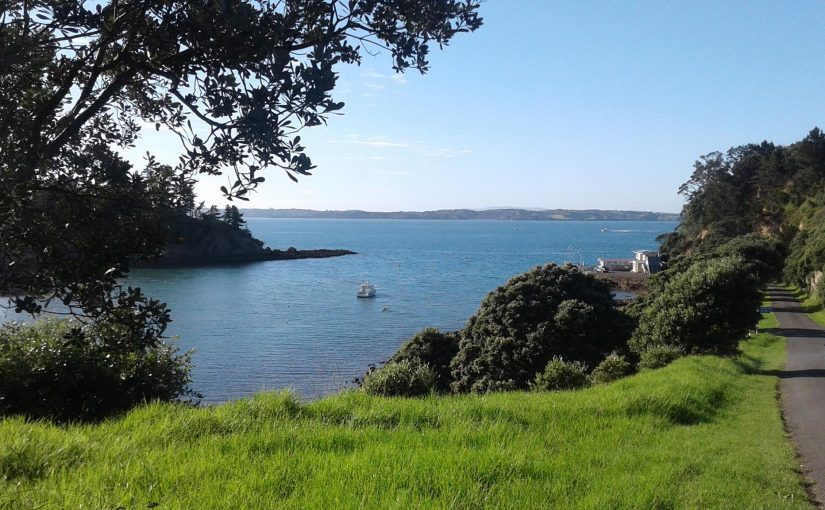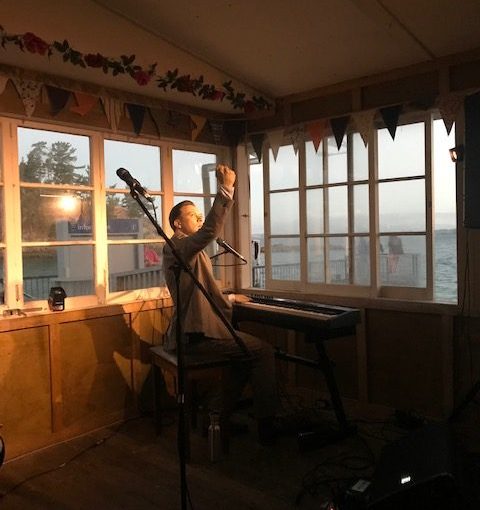Rakino Easter Round-up
Firstly, thank you to the hardy Rakino-ites that humoured me by turning up at the unreasonable hour of 10am for the first of the #ecofest2024 events organised for Easter. The icy south-west wind was howling into West Bay as our group hugged the cliff and hacked and poisoned rhamnus, but the views were spectacular.
Elsewhere, the moth plant removalists were hard at work ripping out the devil’s weed and plucking pods. Bert has an enviable and cunningly wrought device which is just the ticket for this tedious job. It’s a sort of hooky prongy thing on a long pole, and he should probably patent it.

Julianne killing rhamnus
The second event was a 4pm low-tide beach clean-up at the northern end of West Bay, and it was really cool to see how many kids were there. My expectations for buy-in of my fanciful ideas are usually quite low, so massive thanks to everyone who turned up. Unfortunately the beach rubbish at West Bay is mainly small pieces of plastic which are entwined in the leaf and feather middens of the high-tide mark. Common items were foil lolly wrappers, small indeterminate pieces of plastic bags, and jandals. It wouldn’t be a beach clean without finding clothing pegs and soft silicone baits, but my favourite find was a foil wrapper claiming to contain a ‘fart bomb’, and Steve Livesay dragged a sodden duvet inner and cover up the saddle track which impressed me mightily. The beach was also smothered in Lion’s Mane jellies, some of whom were clutching onto bits of plastic. I asked them nicely before removing it…
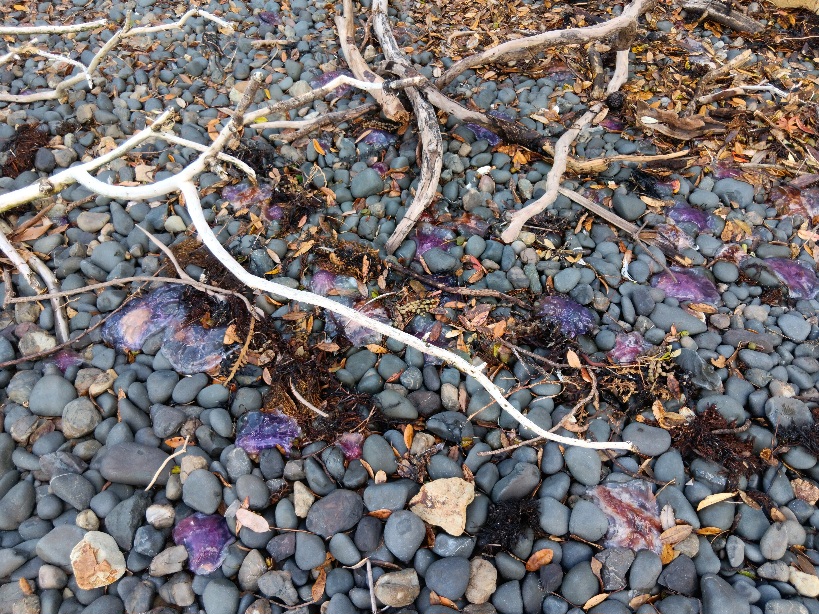
Lion’s Mane Jellies en masse

Buckets of beach rubbish
I didn’t attend the Sunday RRA meeting as planned because I was setting up for Market Day, but I hear that much gratitude was given to Lez in the form of many rounds of applause, there is progress on the Hall, and the progress on the Fire Shed is self-evident, so many thanks to Chris, the Stephen’s (Thomas and Wong), Henry, and John Beasley, plus everyone else who has worked on the shed. It’s looking great. Let’s hope it doesn’t need to be utilised in a hurry.
Harriet played a blinder in generously offering up her garden for a Market Day fundraiser for the Westpac Rescue Helicopter Trust. The kids’ activities for humans of all ages went down a treat, and I reckon we should expand on those for future events. A huge thank you to everyone that helped out, provided materials, time, and participated in this event.

Pinch pots and painting
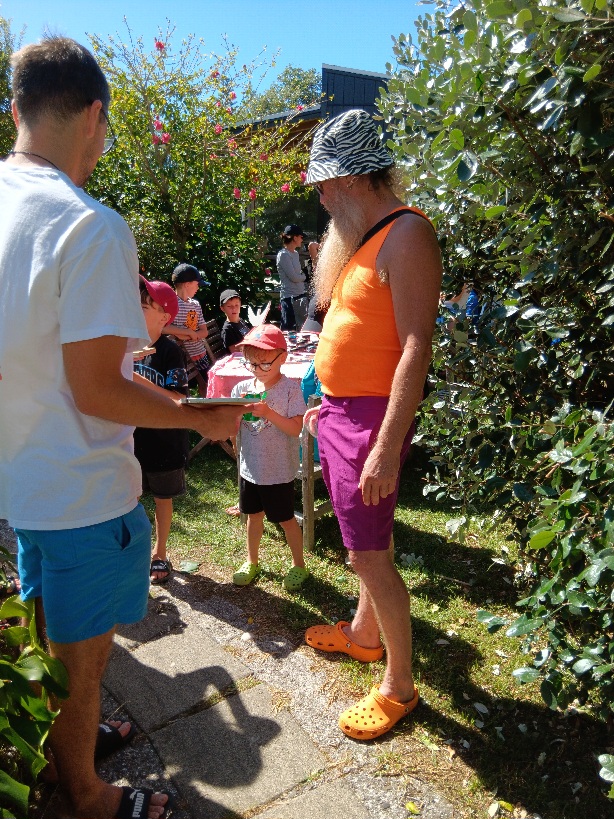
A colourful garden party!
Thanks to:
* Lez for jigsaw cut outs, and John for the test pots and treats,
*Lucy for teaching pinchpots,
*Reilly, Natalie, Carolyn, Dylan, Jo, Jim Wheeler, Lisa, and Harriet for their creations.
*Eleanor for her paintings and life drawings.
*Bert on sausage sizzle with William weeping over onions in the kitchen.
*Simon for the poster, Gary for helping set up, and me for the interminable spruiking..
*Lyndsey & Caroline for their vintage goodies.
*All the Rakino-ites who supported.
We raised $1350 for Westpac… which will be paid this week.

Bert on sausage sizzle duties.
It was also the last weekend ever of the Woody Bay Pizzeria as Alf hangs up his pizza paddle. We dropped in at Monday lunchtime and trade was roaring in the calm of the bay after a few days of a brutal westerly. Woody Bay was full of boats, and pizza eaters.
I hope everyone else had a relaxing Easter, but I had to go home for a rest. . .
Woody Bay on Easter Monday
